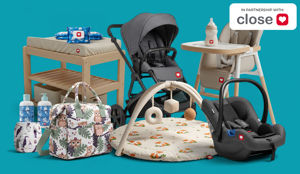Swaddling is a common practice for newborn babies that involves wrapping them snugly in a blanket or cloth. Swaddling can help soothe a fussy baby, improve sleep, and provide a sense of security and comfort. However, it is important to swaddle your baby safely to avoid the risk of injury or suffocation. In this article, we will discuss the benefits of swaddling and provide tips and guidelines for safe swaddling practices for first-time parents.
Benefits of Swaddling
Swaddling can have numerous benefits for newborn babies. For instance, it can help calm and soothe a fussy baby, making it easier for them to fall and stay asleep. Swaddling can also help prevent the startle reflex, which often disturbs a baby's sleep. Additionally, swaddling can provide a sense of security and comfort for newborns, which can help them adjust to their new surroundings and feel more at ease.
Safe Swaddling Guidelines
When swaddling your baby, it is important to follow safe swaddling guidelines to reduce the risk of injury or suffocation. Here are some tips to keep in mind:
- Choose the right swaddle blanket. Select a lightweight, breathable blanket or cloth to swaddle your baby. Avoid using thick blankets or materials that can cause overheating or discomfort.
- Make sure the swaddle is snug but not too tight. The swaddle should be snug enough to provide a sense of security and comfort but not so tight that it restricts your baby's breathing or movement. A good rule of thumb is to make sure that you can fit two fingers between the swaddle and your baby's chest.
- Swaddle your baby on their back. Always place your baby on their back to sleep, and swaddle them in that position. Swaddling a baby on their stomach or side increases the risk of SIDS and suffocation.
- Leave room for movement. Make sure that your baby has enough room to move their hips and legs while swaddling. Tight swaddling around the hips and legs can increase the risk of hip dysplasia.
- Avoid overheating. Overheating can increase the risk of SIDS, so make sure to keep your baby's temperature regulated while swaddling. Use a lightweight blanket and avoid overdressing your baby.
- Stop swaddling when your baby starts to roll over. Once your baby starts to roll over on their own, it is no longer safe to swaddle them. At this point, it is time to transition to a sleep sack or other sleepwear.
Simply click here and enter your details for your chance to win a $250 Amazon spend today!
Alternatives to Swaddling
Swaddling is not the only option for calming a fussy baby or improving sleep. Here are some other strategies you can try:
- Use a sleep sack. A sleep sack is a wearable blanket that provides a similar sense of security and comfort as swaddling but allows more movement and flexibility.
- Try white noise. White noise can help soothe a fussy baby and improve sleep. There are many white noise machines and apps available that can create a calming environment for your baby.
- Use a pacifier. A pacifier can help soothe a fussy baby and promote sleep. However, follow safe pacifier use guidelines and avoid attaching the pacifier to a string or cord.
In conclusion, swaddling can be a helpful strategy for soothing a fussy baby, improving sleep, and providing a sense of security and comfort. However, it is important to swaddle your baby safely to avoid the risk of injury or suffocation. Follow the safe swaddling guidelines outlined above, and consider alternatives to swaddling if it is not working for your baby. Always monitor your baby while swaddling, and never leave them unattended. By following these tips and guidelines, you can safely swaddle your newborn baby and help them feel secure and comfortable during their first few months.
Additionally, it's essential to remember that not all babies will enjoy being swaddled. Some may prefer more freedom of movement, while others may simply not find swaddling soothing. As a parent, paying attention to your baby's cues and adjusting your swaddling technique or trying other methods if necessary is important.
Don't hesitate to talk to your pediatrician or a certified sleep consultant if you have any concerns or questions about swaddling or your baby's sleep. They can provide additional guidance and support to ensure your baby sleeps safely and comfortably.







